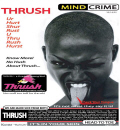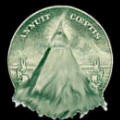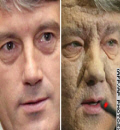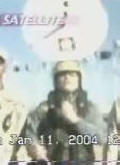Kastner is more direct: "The nation is not willing any longer to invest in basic research in the physical sciences, and I would argue that condensed-matter physics has been treated worst of all. This makes us nervous about making claims that could be attacked, even if they are right."
When they've warmed up a bit, though, Kastner and Marcus do eventually start dropping veiled hints about switchable ferromagnets and high-temperature superconductors, about quantum pumps and filters and repeaters. The focus is microscopically tight, on devices rather than systems. I want to hear what the walls will look like in a world of programmable matter, but belaboring this point is something of a disservice: There's a bright future ahead of us, but making promises about it is not in their job description. "It's easy to raise expectations," Ashoori warns.
For better or worse, things are a bit looser in the world of industry; when I sat down with Joel Martin, founder and chair of the Quantum Dot Corporation, the future was our main topic of conversation. A pre-IPO startup in the heart of Silicon Valley, QDC takes Bawendi's chemically synthesized quantum dots into the realm of bioscience. Where all the money is, remember?
Interestingly, these Qdot particles are not mounted on any substrate at all, but simply float around as ultra-tiny particles in a biological solution. They glow furiously under any light source and are bright enough to show up as winking, monochromatic pinpoints under an ordinary microscope. And when chemical receptors are attached to them, they seek out and illuminate individual molecules, allowing biologists to observe the chemical processes going on inside a cell, in vivo, while they're actually happening. With different types of molecules, each tagged with its own color, the cell becomes a kind of road map, alive with twinkling traffic.
Funding for condensed-matter physics has tanked. "This makes us nervous about making claims that could be attacked, even if they are right."
"It takes the hubris of entrepreneurs to start a company," Martin opines. "You don't have the shoulders of giants to stand on here; you have to make all your own mistakes. Knowing a little about the science doesn't tell you anything about the problems of manufacturing - you have to get in there in a very Edisonian way and just try all the combinations. But in doing that, you create a huge pool of intellectual property and know-how, which can be used in the future."
About the materials-science applications for quantum dots, the 44-year-old Martin - a PhD chemist as well as an MBA venture capitalist - waxes enthusiastic. "I'm actually working on one right now. The real applications will be in things that you're familiar with today: detectors, fiber-optic repeaters, paints and coatings, security inks - making things better, not making these nanorobots that bumble around inside you. This nanoscale technology gives us another degree of control over the properties of matter, of surfaces, that we don't have by other means."
Alas, too much money can shut people up as surely as too little; Martin is a Valley insider who has participated in nine startups, two of them his own. His board of directors is crowded with other venture capitalists, who eat nondisclosure agreements for breakfast and expect a return on their $40 million investment. I don't bother asking what he's working on - if it pans out, we'll know soon enough. But when I ask his opinion on whether prospects are good for programmable matter in the abstract, he has a one-word answer: "Absolutely."
As a physicist on Sun's staff, Howard Davidson is free to take things a couple of steps further. He points out that the frequency of a laser depends on the gain frequency of the material generating it - an electrical property - and the resonant frequency of the mirrored chamber in which it builds up - an optical property related to the index of refraction. So with quantum dot materials you could achieve one of the holy grails of the photonics industry: a tunable laser.
Davidson also points out that our nanoscale fabrication techniques have already produced materials that are roughly a million times more sensitive to magnetic fields than are any naturally occurring substance. IBM, for example, uses these in the read heads of disk drives, he says, and "the ability to switch that property on at will is of great technological interest." And on the subject of superconductors: "There is no good theory here. We still don't know how the high-temperature ones work." But with much better computers and more versatile materials, he reasons, we should eventually be able to plumb these mysteries, and begin designing high-temperature superconductors rather than discovering them randomly.
So all in all, it's looking damned good for programmable matter. But when it comes to describing its future concretely, even Davidson seems to draw something of a blank. That sort of gonzo extrapolation is, properly, the job of science fiction writers. Since I'm one of these, I'll cautiously suggest the next couple of steps myself.
Follow Me
To date, I'm not aware of any experiment that has placed more than a handful of individually programmable quantum dots together. This is primarily because our manufacturing techniques aren't up to the task, but it isn't difficult to imagine, say, a 1-millimeter-square microchip covered with a grid of artificial atoms. The properties of Moungi Bawendi's "2-D artificial solids" can be adjusted only en masse, but this designer chip would be the real McCoy: a slice of matter that is fully programmable at the atomic level.
Now, the spacing of the quantum dots on our chip is problematic, since they need to be close enough to interact, but not so close that the electrodes of one will have a major disruptive effect on the contents of its neighbors. For argument's sake, let's say the whole thing - electrodes, confinement space, and safety margins around the outside - is a square 20 nanometers (about 100 silicon atoms) on a side. This size should permit the sort of room-temperature and visible-light interactions we're interested in. This also means the 1-mm2 chip will hold 50,000 rows of 50,000 dots each, or 2.5 billion artificial atoms.



.jpg)

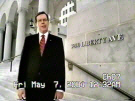

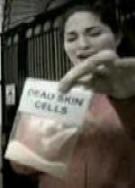




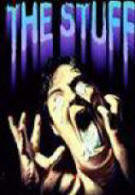
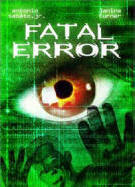
.jpg)








